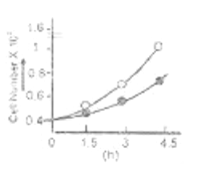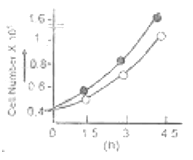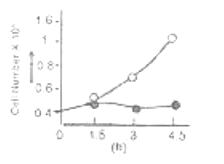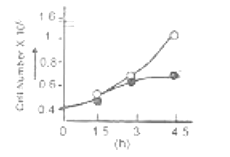 Multiple Choice Questions
Multiple Choice QuestionsWhich of the following statements is NOT true about small interfering RNA (siRNA)?
siRNA has a 21-25 nucleotide sequence with 2 nucleotides overhanging at the 3’end.
siRNA is processed by the RNA protein complex RISC.
siRNA is often induced by viruses.
siRNA does not generally act at the level of transcription.
Presence of an internal ribosome entry site (IRES) in mRNA
Inhibits its translation.
Promotes its post-transcriptional processing.
Has no impact on its translation.
Promotes its translation under adverse conditions
Regulatory elements for expression of ribosomal RNA genes reside in the
Transcribed spacer region
Non-transcribed spacer region
5’ flanking region of individual ribosomal RNA genes.
Internal regions within the genes.
Assuming that the histone octamer forms a cylinder 9 nm in diameter and 5 nm in height and that the human genome forms 32 million nucleosomes, what fraction (approximately) of the volume of nucleus (6 µm diameter) is occupied by histone octamers?
1/ 21
1/ 11
10/ 21
10/ 11
In semiconservative mode of DNA replication, two parental strands unwind are used for the synthesis of new strands following the rule of complementary base pairing. Synthesis of complementary strands require that DNA synthesis proceeds in the opposite direction, while the double helix is progressively unwinding and replicating in only one direction. One of the DNA strands is continuously synthesized in the same direction as the advancing replication fork and is called the leading strand whereas the other strand is synthesized discontinuously in segments and is referred to as lagging strand. These short fragments made discontinuously are labeled as Okazaki fragments. These Okazaki fragments need to mature into continuous DNA strand by which one of the following combinations of enzymes?
DNA Pol III and DNA ligase
DNA Pol I and DNA ligase
DNA Pol II and DNA ligase
DNA gyrase and DNA ligase
B.
DNA Pol I and DNA ligase
The Okazaki fragments can be matured into continuous DNA strands by DNA Pol I and DNA ligase.
A synthetically prepared mRNA contains repetitive AU sequences. The mRNA was incubated with mammalian cell extract which contains ribosomes, tRNAs, and all the factors required for protein synthesis. Assuming no initiation codon is required for protein synthesis, which of the following peptides will most likely be synthesized?
A single peptide composed of the same amino acid sequence.
A single peptide with an alternating sequence of two amino acids.
A single peptide with an alternating sequence of three amino acids.
Three different peptides each sequence composed of a single amino acid.
During cell cycle regulation in eukaryotes, there are post-translational modifications of protein factors, which act as switches for different phases of the cell cycle. A cell population of yeast was transfected with a gene for Wee1 kinase (modifies Ccc2 protein). Assuming that the transfection efficiency was 50% only, which of the following graphical representation of the results is most appropriate?




Origin of replication usually contains
GC rich sequences
Both AT and GC rich sequences
No particular stretch of sequences
AT rich sequences
σ-subunit of E. coli RNA Polymerase DOES NOT
initiate transcription and fall off during elongation.
increase affinity of the core enzyme to the promoter
binds to DNA, independent of the core enzyme
ensures specificity of transcription by interacting with the core enzyme
The cap-binding protein (eIF4E), which is involved in the global regulation of translation, is highly regulated in eukaryotic cells. In an experiment, a researcher transfected mammalian cells with (eIF4E) gene for its overexpression. Due to this, the cells will undergo
apoptosis
neoplastic transformation
No change
differentiation
